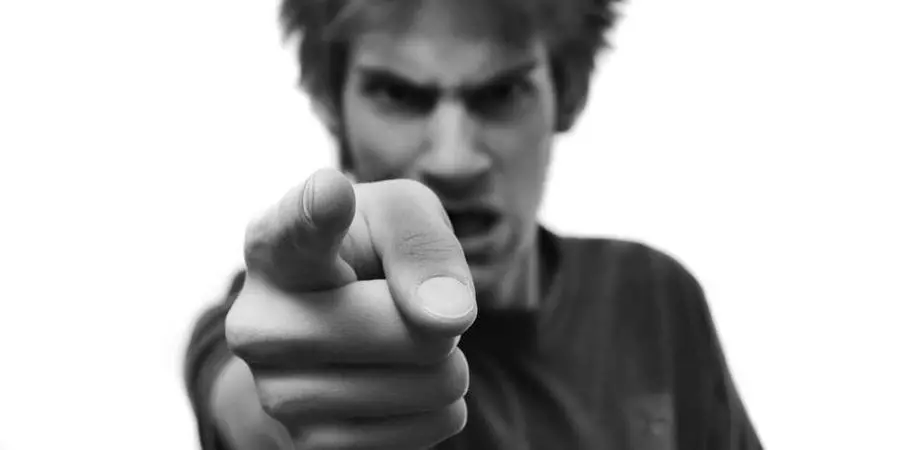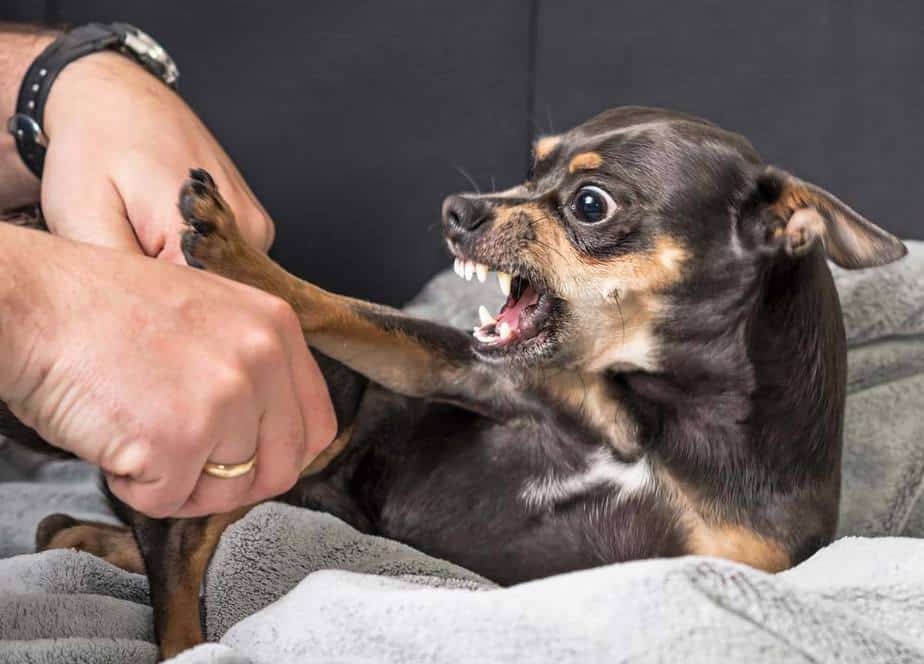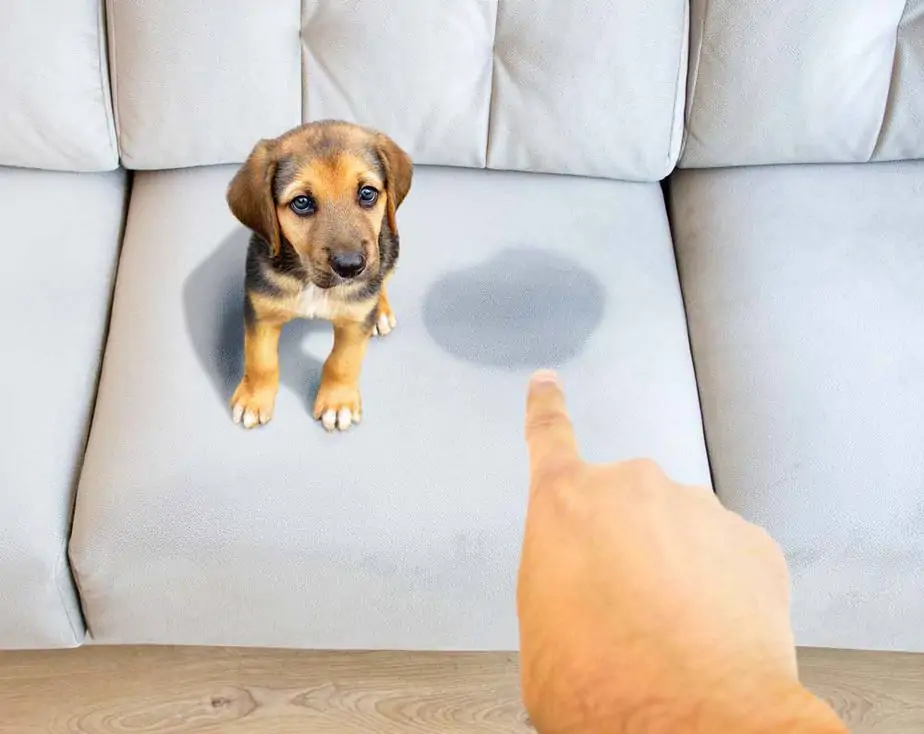Puppies are hard work, no doubt about it. And training them what’s right from wrong can take time and a lot of patience. If you’ve found yourself at the end of your tether and have lost your temper with your puppy, or smacked or hit them, or kicked them, or yelled at them, then you wouldn’t be the first. However, it’s important to learn how to not only teach your puppy how to behave, but also how to respond appropriately to bad puppy behavior.
Having a puppy is hard work! They require a lot of patience, forgiveness, and grace. Keep in mind that they weren’t born knowing human expectations. Although ownership can be challenging, physically harming your pet is not an acceptable way handle the situation. When you feel your frustrations building, simply step away. Give yourself a break. Place your puppy somewhere it will be safe like in puppy playpen and walk away. This will give you time to reset. Physically harming or scaring your pet will only lead to trust issues and other behavior problems. Committing to a puppy, is committing to 10-14 years together. It is necessary to do research prior to bringing home your new companion. If you discover that you and your pet are not well suited, it is preferred to rehome your pet instead of allowing ongoing resentment and anger build. Dr. Marti DudleyVeterinarian Answer
Losing Patience with Your Puppy
It’s not easy when you have an out of control puppy. Sometimes you can’t help but get angry with them. And when you add onto a misbehaving puppy the stresses of everyday life, it’s no wonder sometimes things boil over.
There are moments during puppy ownership that will test your nerves. The main offenders are when your puppy growls at you, or when they poop on your good carpet, or when they run off and won’t come back when you call them.
By managing their behavior through appropriate training, obedience, and socialization, you will find your puppy becomes a better behaved dog, and there’ll be less moments of puppy rage.
It’s also a matter of doing many small things to lessen the impact of a puppy. What I mean by that is it’s not just going to be one thing that helps.
Training is important, but so is making sure they have their own space with a crate. So is giving them lots of treats to praise correct behaviors. Not to mention getting them out of the house to socialize.
One thing we highly recommend for puppies is to get them a Bark Box. Giving them ever-changing toys is a great way to keep them interested, rather than finding destructive behaviors that can test your patience.
Why Does Puppy Rage Happen?
Some new puppy owners aren’t well prepared for what to expect when they bring a puppy home. Mostly before getting a puppy, it’s the excitement about which type of breed to get and how darn cute they are!
It’s only when you get them home that you realize you actually brought home a Warner Brother’s Tasmanian Devil. Getting a puppy is a lifetime commitment. They are a new entrant in your family and need to be treated that way as well.
It’s vital that you provide a loving environment for them to flourish in, and any fear you instill in them will only come back to haunt you.

Hitting or Yelling at Your Puppy
Firstly, if you’re here reading this it means you feel bad about hitting, or kicking, or yelling at your dog, which is a good thing! You want to repair your relationship with your puppy. And no doubt you just want a puppy who is well behaved – don’t we all!
Let me ease your guilt: With some extra love and attention your puppy will get over it. But it’s important to look at how to manage your puppy and your expectations going forward so outbursts don’t reoccur.
Before we move forward though, it’s important to tell your puppy you’re sorry and you won’t ever do it again. This isn’t for your puppy, this is for you. Make a promise to yourself and to your puppy that you will be the best owner you can be… and this means educating yourself on better training methods to teach your pup right from wrong.
Your puppy wants to impress you – believe it or not. They just don’t know what you want! And this is where it’s important to understand your puppy doesn’t know when they’re being naughty.
It might be a good idea to read our post: How to Discipline a Puppy: Safe and Effective Methods.
From your pup’s point of view, they’re doing what comes naturally to them. And then a big angry person has scared the heck out of them, and they really don’t know why. And it can have serious implications for your dog if this becomes a reoccurring event.
Are you interested in this: I Regret Getting a Puppy
This post might also be helpful: Exhausting Puppy: Are You Overwhelmed or Depressed?
Or perhaps you’d like to read: My puppy doesn’t like me.

Taking Anger Out on Your Dog
This is a difficult question to read and to answer, but it’s also an important one. Is this outburst a one-off event, or do you often have outbursts or fits of anger?
Anger is a response to an external stimulus, so it’s easy to blame the external event or person or dog in this case. The truth is your response is what has caused the outburst.
Anger is a powerful emotion and once expended, we can feel a release, but it’s often followed by a deep feeling of guilt or shame.
Here are some things you can do next time you feel the anger swelling inside and you might lose control of the situation:
- Leave the situation – If your puppy has done something to infuriate you, then you need to leave the room, walk away from them. Give yourself time to better judge the situation.
- Take a breath – It can be difficult to stop an outburst of anger, so you need to find a way to interrupt it. Taking a breath will pause yourself for just a second, and in that moment, you need to choose a different way to react.
- Move – During this moment of anger, you will have a lot of energy wanting to be unleashed. So give it an outlet. Go for a run, a fast walk, go workout, or hit a punching bag. Release the energy somewhere else.
- Talk to Someone – If you feel you have an anger problem, then you should speak to someone who can help. Don’t feel embarrassed or ashamed. It takes courage to address it and to want to become better.
If you feel you need help with your anger, you can reach out to Safe Horizon or A Place of Hope or you can use this database to search for an anger management therapist in your area.
How to Be More Patient with Your Puppy
Have you got a barker? Or a puppy who wees and poos inside all the time, no matter how much house training they get? Or what about a puppy who keeps biting everyone, and jumping at your face? Or are they a shoe eater? None of these things would be surprising because this is what puppy’s do. And these behaviors need to be taught out of your puppy, not yelled out of them.
A puppy who has been taught through positive training methods will always be a better-behaved dog in the long run.
Hitting or yelling at your puppy will make them fear you. Fear leads to bad behaviors. Bad behaviors lead to reoccurring negative situations.
Behavior problems stemming from fear and aggression are the number one reason dogs are relinquished to shelters – and the number one cause of death for dogs under 3 years of age (even above infectious diseases).
Rubbing a puppy’s nose in poop or wee will also induce a fear response.
Here are signs of a fear response in a puppy:
- Aggression
- Attempting to hide
- Too distracted for you to get their attention
- Growling
- Hyperactivity
- Inability to settle
- Lack of appetite (including being unable to take a treat)
- Licking lips
- Lifting a paw
- Loss of toilet training
- Lowered body language
- Pacing
- Panting
- Salivation
- Shaking/trembling
- Whale eye (showing whites of eyes)
- Yawning
- Turning away from you
- Hiding
- Trembling
And here are troublesome behaviors that can result from a fearful puppy:
- Aggression (Growling, Snapping, Biting)
- Anxious Chewing
- Loss of House-training
- Inability to Settle
- Difficult to train
- Excessive Barking
- Digging
As you can see, this fear response leading to bad behaviors will become a repeating situation in a home where a puppy is being trained through negative methods.

How to Repair Your Relationship with Your Dog
Before we get into positive training methods, let’s first repair your relationship with your dog.
One of the simplest ways to earn a dog’s trust back is by giving them the things they love and need.
When you feed your puppy, say their name to them. This not only gets them used to their name, but also associates their name with something they like doing. They will also become comfortable with your voice.
Give them treats often. Very often! When our Bobby was a puppy we had small piles of treats around the house where we could get to them quickly, and sometimes even in our pockets – especially for walks.
This is so we could quickly reward him treats when he was doing the things we wanted. Or we could quickly do some training whenever we had his attention.
Not only will giving your puppy treats regain their trust back, but you will be showing them the way to success!
Pet your puppy softly with slow and soft sounds – their name is a good thing to say to them as you pet them.
However, the most important thing you can do to earn back their trust though is to stay calm and patient with them through their learning process. Your puppy won’t always be out of control.
They will calm down with age, and they will also learn right from wrong. But it does take time. A human baby takes a long time to learn how to do almost everything, and a puppy is no different – but they do learn, it just takes time, patience, and dedication to knowing that your positive input will create a dog you will love for years to come.
How to Discipline a Puppy
There are definitely right ways and wrong ways to discipline your puppy. The right way will result in your puppy feeling comfortable with you and their boundaries. The wrong way will result in a fearful puppy who repeats unwanted behaviors out of anxiety.
The Right Way to Discipline a Puppy
The Reprimand
Any reprimand must take place while the behavior is occurring and not after. You can use your voice with a firm “No”, or clap your hands, or rattle a tin of pennies.
This action must take place during the event.
This reprimand is used to startle the current action of the puppy. And once this reaction takes place, it’s your job to them redirect your puppy into a preferred action. This can be moving them to another area, engaging them in a toy, or if they’re peeing, then taking them outside.
Once they are in this new area or doing this new action, then you need to reward them with a treat.
Your puppy will quickly learn right from wrong.
NOTE: If your puppy continues to misbehave in this action you are catching them in, then they are doing it without your knowledge and are getting away with it. You need to keep a close eye on them during this early stage of their lives as they learn their boundaries.
Distraction
Any time your puppy isn’t doing what you want them to do, then you need to distract them over to something you do want. For instance, if your puppy is chewing on a good slipper, then swap it out for a toy.
If your puppy is barking, then get their attention with a kissy sound, a loud clap, a high-pitched noise, or “No”. Or if those fail, try rattling the shaker can of pennies.
Once you have their attention, get them to come to you and give treats. Or get them engaged with a toy.
The more you do this, the less they will do the unwanted behavior.
Treats are for Good Behavior and Training
Refrain from offering treats for no reason. You want to give treats when your puppy is behaving correctly.
Ignore Your Puppy
Your puppy will try anything to get your attention, so if they’re jumping up on you, don’t talk to them, don’t look at them. The best thing you can do is turn your back.
Once they’re settled, or sitting, give them a treat.
Leave the Room
If your puppy bites you and you yelp and pull your hand away, they should learn quickly not to do it. If they continue to bite, then stand up and leave the room, closing the door.
Return shortly after and engage them again and treat their good behavior. Repeat steps if necessary.
Time-Outs
If your puppy is misbehaving, then you can place them into a time-out.
A time-out shouldn’t last longer than a couple of minutes.
If you need to separate yourself from your pet and you want to crate your puppy, ensure that you are calm before doing so. Crating should never be a form of punishment as your puppy should feel safe and secure in their crate. If you need to place your puppy in their crate, make it a pleasant experience despite your frustrations. Dr Marti DudleyVeterinarian Comment
Losing Temper at Puppy for Growling
This is a common behavior from a puppy that will often elicit an outburst of anger from an owner. It can be startling as an owner and it’s hard not to think I need to get this aggression out of my puppy now!
This is especially true if you have children and your puppy has growled at them.
You might think, I have to put a stop to this! But actually, if you teach their growl out of them, you actually take away a warning signal.
If you take the growl away, a dog can go straight to a bite without warning.
If your puppy is growling when you are picking them up or getting too close to them, they’re letting you know they want space. Hitting or smacking them will only instill a greater sense of fear in them.
Another reason for them growling is they’re afraid and the fear in them is triggering a defensive response.
Rather than to overpower them, yell, hit, or scold them, you need to address why they’re feeling this way.
Did your puppy growl due to heavy handed play?
The ASPCA recommends avoiding acting like a dog. Muzzle grabs, alpha rolls, scruff shakes, and other heavy-handed maneuvers can appear unpredictably aggressive and should be avoided.
If you think your puppy has an aggression problem, then you should consult a dog behaviorist.
Here is a table of dog trainers and behaviorist who can get your puppy on the right track to success.
| Organization Name | Independent Certification | Graduates of a Specific School |
|---|---|---|
| International Association of Animal Behavior Consultants | Yes | No |
| Certification Council of Professional Dog Trainers | Yes | No |
| Karen Pryor Academy | No | Yes |
| The Academy for Dog Trainers | No | Yes |
| Board Certified Veterinary Behaviorists | Yes | No, but must be a graduate of a veterinary school |
Resource Guarding
If your puppy growls when you come near their food, don’t go near them when they’re eating. Have them eat away from a thoroughfare of people or feed them in a crate.
Another option is to stand a meter away from them during mealtime. Say their name in a calming voice. Next meal take a step closer without eliciting their growl response. Once again praise them.
You can even throw a piece of cheese to them. Repeat the process getting ever closer to them until they are comfortable having you close to them as they eat.
If they have a particular toy that they’re protective of, then remove it from them.
If they growl when you pet their head, then don’t pet their head. Likewise, if they don’t like their feet touched. Instead, reward positive interactions and touching through holding them and giving treats. Show them that handling them is a positive thing.
This is why it’s vital to have patience as a puppy owner – it takes time and dedication.
Final Word
A puppy isn’t just about fun. I’ve found our dog has directly taught me more empathy for animals, as well as shown me how to be more patient.
It takes time, dedication, patience, and a lot of love to raise a puppy. Sometimes they will push your buttons and test your limits. They will go through stages of regression, and it can be seriously frustrating.
But it’s vital that you realize that when you lash out at your puppy, you are doing the opposite of what you want. You are creating more of the bad behaviors. This alone is motivation enough to make sure you always treat your puppy with kindness.
Your dogs can be your best friend, but it’s up to you to make them one.




